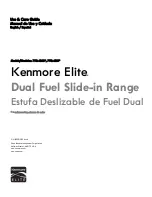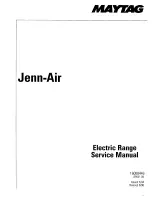
11
Before Setting Surface Controls
Using Proper Cookware
Do not place flammable items such as plastic
salt and pepper shakers, spoon holders or plastic wrappings on
the cooktop when it is in use. These items could melt or ignite.
Potholders, towels or wooden spoons could catch fire if placed
too close to the range cooktop.
Do not place aluminum foil, or any material
that can melt on the range cooktop. If these items melt they may
damage the cooktop.
Do not straddle cookware between two
cooking surfaces unless the cookware is designed for that
purpose, as with a griddle.
For best cooking results, cookware should have flat bottoms that
rest level on the burner grate. Before using cookware, check for
flatness by rotating a ruler across the bottom of the cookware
(
).
Please note: The size and type of utensil used and the amount
and type of food being cooked will influence the burner flame
setting needed for best cooking results.
Cookware Material Types
The most popular materials available are:
•
Aluminum - Excellent heat conductor. Some types of food
will cause it to darken (Anodized aluminum cookware resists
staining and pitting).
•
Copper - Excellent heat conductor but discolors easily.
•
Stainless - Slow heat conductor with uneven cooking results.
Is durable, easy to clean and resists staining.
•
Cast Iron - A slow heat conductor however will retain heat
very well. Cooks evenly once cooking temperature is
reached.
•
Porcelain-enamel on metal - Heating characteristics will
vary depending on base material.
•
Glass - Slow heat conductor.
Figure 6: Check for flat bottom cookware
Summary of Contents for 790.4260 Series
Page 43: ...2500 10 ...
Page 44: ......












































